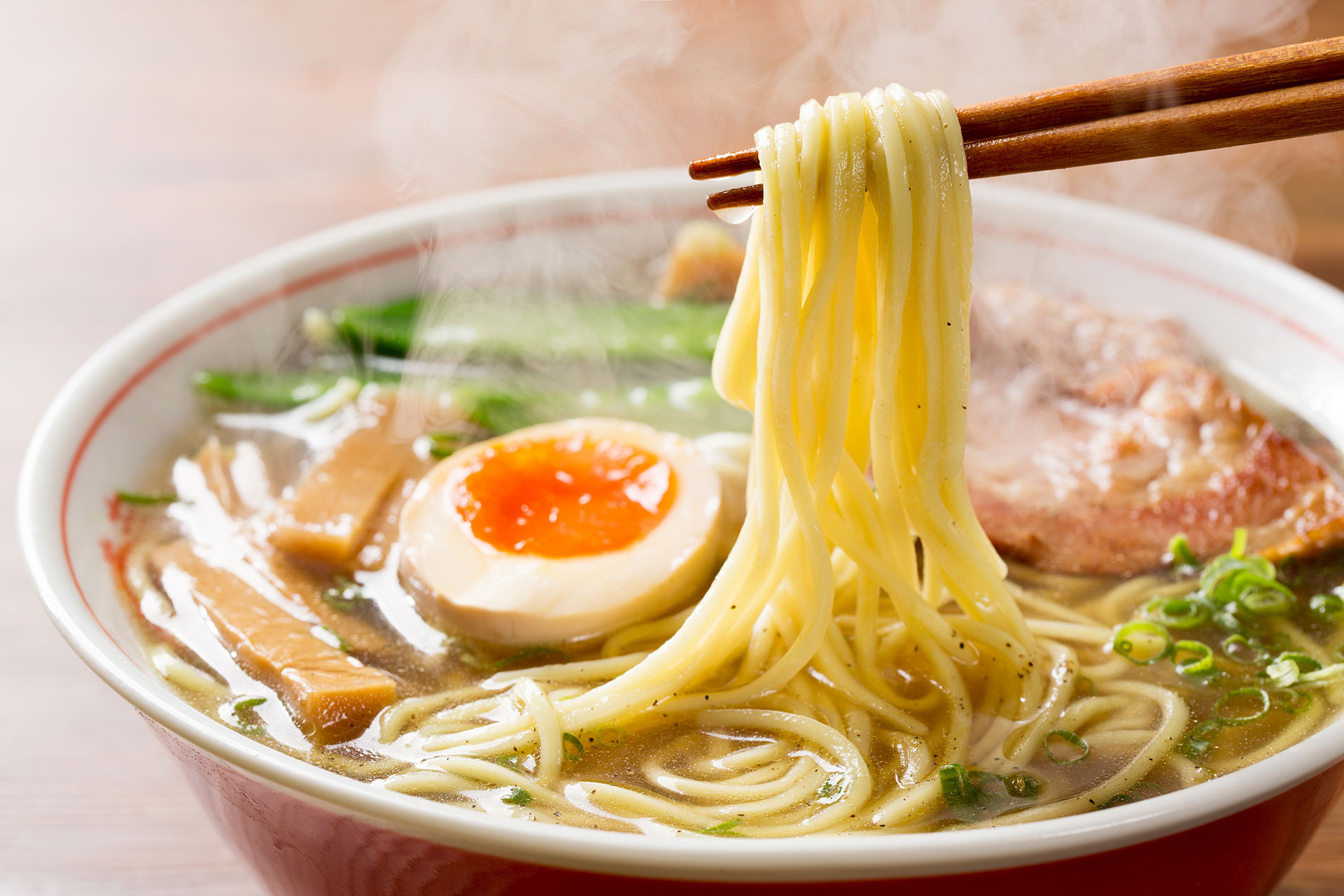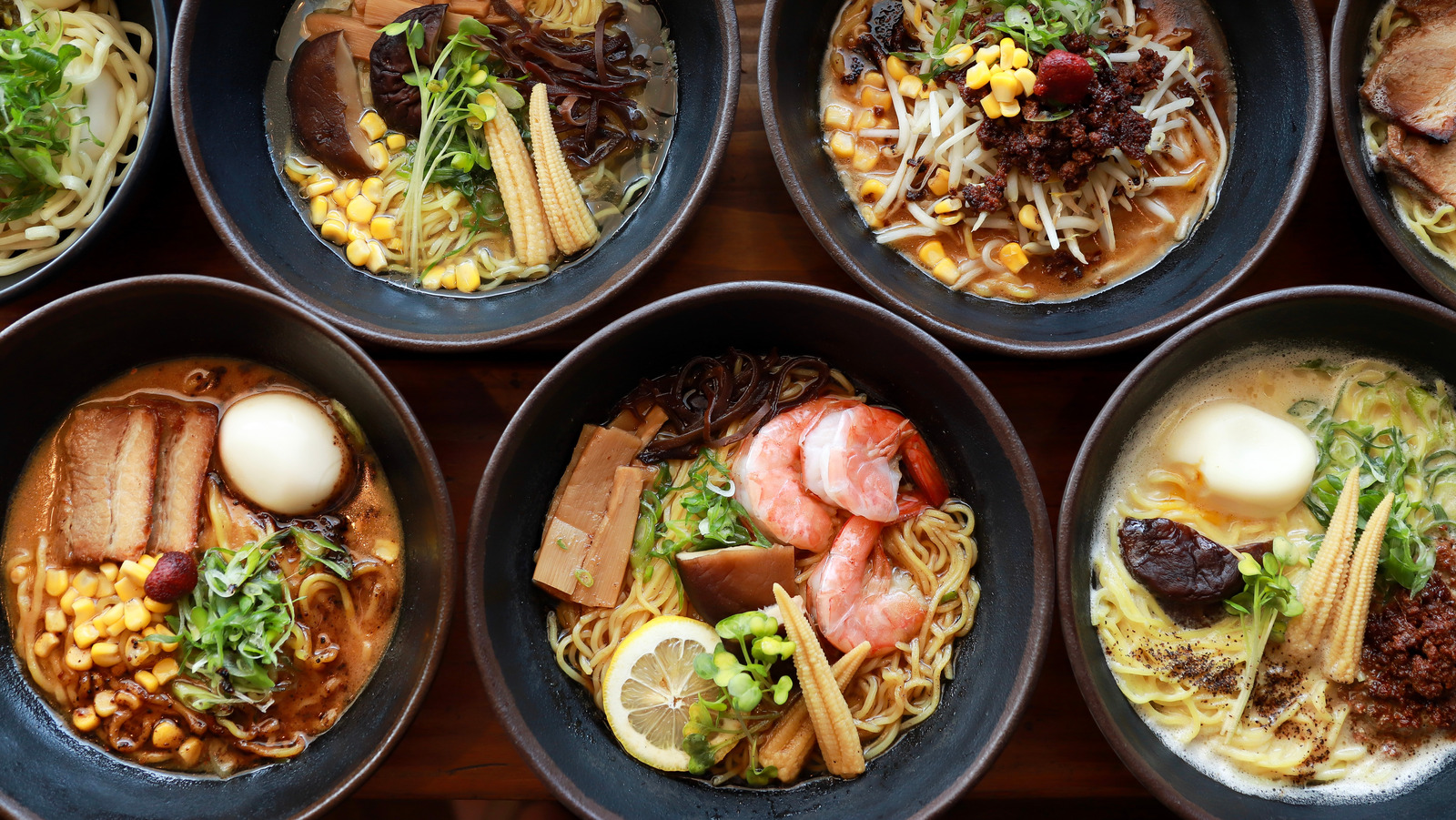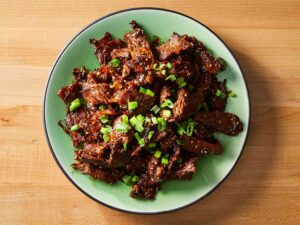Introduction:
Take a flavorful trip through the bustling culinary landscape of the United States with a beloved comfort food: ramen. Originating from Japan but embraced and reinvented across the globe, ramen has found a special place in American cuisine, celebrated for its rich broths, chewy noodles, and customizable toppings. In this article, we’ll guide you through the art of crafting American-style ramen at home, from preparing the hearty broth to selecting the perfect toppings.

1.Embracing Ramen in the USA:
Discover how ramen has evolved and gained popularity in the United States, becoming a beloved comfort food for food enthusiasts of all backgrounds.
Explore the diverse ramen scene across America, from bustling ramen shops in major cities to innovative fusion interpretations in local eateries.
2.Crafting Flavorful Broths:
Dive into the world of American ramen broths, ranging from classic tonkotsu and miso to inventive creations like spicy chicken and vegetarian mushroom.
Learn about techniques for simmering broths to perfection, infusing them with layers of flavor using a variety of ingredients and seasonings.
3.Navigating Noodles:
Explore the wide range of ramen noodles available in the American market, from traditional wheat noodles to gluten-free and alternative grain options.
Master the art of cooking noodles to the desired texture, whether you prefer them firm and chewy or soft and slurpable.

4.Elevating with Toppings:
Get creative with a plethora of toppings to customize your American ramen bowl, ranging from classic pork belly and soft-boiled eggs to innovative additions like crispy fried chicken and pickled vegetables.
Experiment with textures and flavors to create your own signature ramen bowl that reflects your personal taste preferences.
5.Assembling the Perfect Bowl:
Follow step-by-step instructions for assembling and plating your homemade American ramen bowl, ensuring a beautiful presentation and harmonious balance of flavors.
Learn tips for garnishing your ramen with fresh herbs, citrus zest, and other finishing touches to elevate the dining experience.
6.Vegan and Vegetarian Options:
Discover plant-based alternatives for crafting delicious vegan and vegetarian ramen bowls, featuring vegetable broths, tofu or seitan protein options, and an array of colorful vegetables and herbs.
Explore creative flavor combinations and umami-rich ingredients to satisfy both meat-eaters and plant-based enthusiasts alike.

7.Regional Influences and Innovations:
Learn about the regional variations and culinary innovations shaping American ramen culture, from Southern-inspired ramen with barbecue-infused broths to West Coast fusion bowls featuring fresh seafood and Asian-inspired condiments.
Get inspired to experiment with local ingredients and flavors to create unique ramen creations that celebrate the diverse culinary landscape of the United States.
8.Tips and Tricks for Success:
Discover practical tips and troubleshooting advice for making delicious American ramen at home, from sourcing quality ingredients to perfecting cooking techniques.
Learn how to adapt recipes to suit your taste preferences and dietary restrictions, ensuring a satisfying ramen experience every time.
Conclusion:
With its comforting warmth and endless possibilities for customization, American ramen invites culinary enthusiasts of all levels to embark on a delicious journey of creativity and exploration. Whether you’re craving a classic bowl of tonkotsu ramen or eager to experiment with bold flavors and innovative toppings, crafting your own American-style ramen at home is sure to satisfy your taste buds and ignite your culinary imagination. So gather your ingredients, embrace your creativity, and get ready to savor the soul-nourishing goodness of homemade ramen, USA-style.
FAQ’s:
1. Is American ramen different from traditional Japanese ramen?
American ramen often incorporates a wider range of flavors and ingredients compared to traditional Japanese ramen. While both styles feature a rich broth and chewy noodles, American ramen may include fusion elements and regional variations inspired by diverse culinary influences.
2. Can I make ramen at home if I don’t have access to specialty Asian ingredients?
Absolutely! Many American-style ramen recipes can be adapted using ingredients readily available in most grocery stores. You can substitute traditional Japanese ingredients with local alternatives and experiment with flavor combinations that suit your taste preferences.
3. Are there vegetarian and vegan options for American ramen?
Yes, there are plenty of plant-based alternatives for crafting delicious vegetarian and vegan ramen bowls. You can use vegetable broth as a base, and add tofu, tempeh, or seitan for protein. Additionally, a variety of vegetables, mushrooms, and seaweed can be used to enhance flavor and texture.
4. How long does it take to make homemade ramen?
The time required to make homemade ramen can vary depending on the complexity of the recipe and the type of broth you choose to make. While some broths may require several hours of simmering to develop rich flavor, other recipes can be prepared relatively quickly using store-bought broth as a shortcut.
5. Can I freeze homemade ramen for later use?
While it’s possible to freeze homemade ramen, the quality of the noodles and toppings may be affected. For best results, it’s recommended to freeze the broth separately from the noodles and toppings, and then reheat and assemble the ramen when ready to serve.





